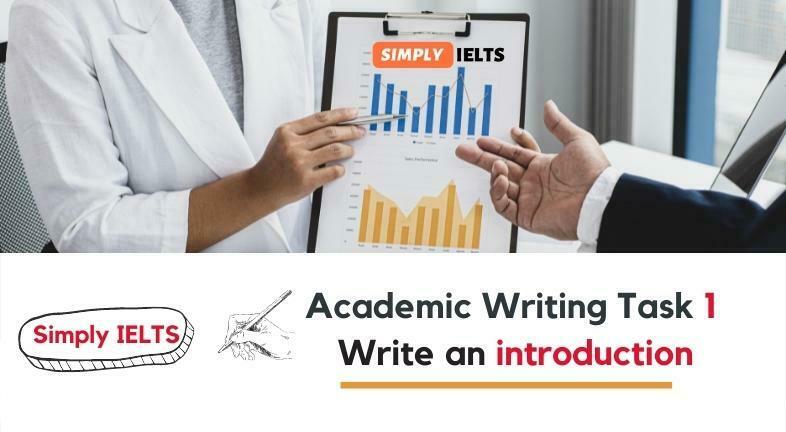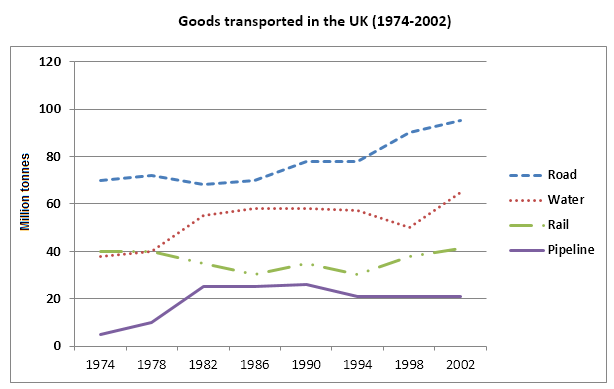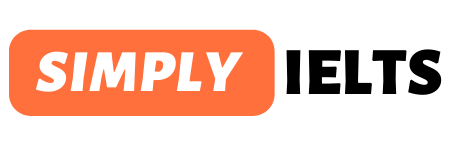How to write an introduction to IELTS Writing Task 1 (Academic)?
How to write an introduction to IELTS Writing Task 1 (Academic)?

Many IELTS Academic students find Writing Task 1 or report writing slightly tricky because they have never encountered any writing task like it before. Usually, they have a question about how to begin writing this report. Well, there is a simple answer to this question.
To write an introduction to IELTS Writing Task 1 (Academic), you should write two to three sentences. The first sentence should describe the title of the chart while the second sentence can give details about the quantities or timelines.
Sample IELTS Writing Task 1 (Academic) to write an introduction
Before we begin, let us look at a sample IELTS Writing Task 1 (Academic).
You should spend 20 minutes on this task.
The graph below shows the quantity of goods transport by various modes of transport in the United Kingdom from 1974 to 2002.
Summarise the information by selecting and reporting the main features and make a comparison where possible.
Write at least 150 words.

Pay attention to following on IELTS Writing Task 1 (Academic)
Here, the first sentence is an instruction suggesting that you spend 20 minutes on the given task.
Chart Description of IELTS Writing Task 1 (Academic)
The second sentence is the chart description statement which gives you the details about the illustrated chart. Always read this sentence as it will help to understand the given data.
Task Description on IELTS Writing Task 1 (Academic)
The next statement in the question is the task description. This sentence informs you about the requirements you need to fulfil in your report.
The last sentence is again an instruction specifying the minimum number of words you need to write in your report.
Below these sentences, you have a chart. The chart comes with a title, unit of measurement, dynamic chart, timeline, and list of elements.
The title of the chart tells us what the chart is about. In this sample, the title specifies that the chart provides statistics for the number of goods transported in the UK.
Axes on IELTS Writing Task 1 (Academic)
Further, we have X-axis and Y-axis, which help us to read the data. Firstly, in the above example, the X-axis represents how the amount of transport was carried. Additionally, it tells you that the data is changing with respect to time. Hence you can conclude that it is a Dynamic chart in which the given information varies with respect to time. On the other hand, the Y-axis represents the unit of measurement, which tells us that the number line is measured in terms of million tonnes.
A legend on IELTS Writing Task 1 (Academic)
Lastly, the table below to the chart is the index/legend. This part of the chart tells us about the modes of transport for which the data is provided. These are the items that we are supposed to compare in this report.
Writing Introduction on IELTS Writing Task 1 (Academic)
Now as said earlier, many wonder how to begin the IELTS Writing Task 1.
You should write 2 to 3 sentences in this paragraph.
Firstly, writing 2 to 3 sentences will help you to pen down about 25 words and cover the required number of words. Secondly, when you have to write more than one sentence, you will automatically focus on forming your own sentence instead of repeating the one given in the question. Now many students argue that they could simply paraphrase the chart description; however, replacing words in the task with their respective synonyms doesn’t leave a good impression on the examiner.
Then the question is, how should I begin the IELTS report? Before we learn to write the introduction paragraph, let us look at a sample introduction paragraph. It states:
The given line graph provides information about the transportation of goods in the United Kingdom by four modes of transport. This data is collected for the time period between 1974 and 2002, measured in terms of millions of tonnes.
As you can see, the paragraph comprises two sentences with each sentence having an exact role. The first sentence is telling the reader what the chart is about. And the second sentence states the additional details that could help the reader co-relate with further paragraphs.
The first sentence of Introduction on IELTS Writing Task 1 (Academic)
In the first sentence of the introduction, you should use the title of the chart so that it serves the purpose of introducing it. Again, we are using only the title to frame the first sentence so that the statement we write is not similar to the statement given in the question.
To write the first sentence, you can see the rough structure as shown on the screen.
The given ____(state the type of chart)__ provides information about _____(use the title )_____ (Number of elements compared).
Start by stating the type of chart, then state that it is giving some information. Follow it by the title. Lastly, complete the sentence by stating the number and type of elements being compared.
Let us frame the sentence using the rough structure. The type of chart is a line graph. The title is the transportation of goods in the United Kingdom. Lastly, there are four elements, and they are the modes of transportation. Now let us put the pieces in the rough structure and see how the sentence sounds.
The given line graph provides information about the transportation of goods in the United Kingdom by four modes of transport.
Now while writing this sentence, ensure that you do not write any additional details such as the timeline or unit of measurement because you would be using these details to write the next sentence.
The second sentence of Introduction on IELTS Writing Task 1 (Academic)
Now, let’s move to write the second sentence of the introduction paragraph. This sentence should give additional details about the chart.
So, we will point out the timeline and unit of measurement in this sentence. To write this sentence, you can use the rough structure illustrated.
This data is collected from the time period between _(state the First year)__ and ___(state the last year)_, measured in terms of (unit of measurement).
Note that the sentence starts with a reference phrase ‘this data’. It is used to create a connection between the previous sentence and the current sentence. After that state, the phrase ‘the data is collected from’ and follow it with the timeline’s first and last year.
From the chart, we know that the timeline is 1974 to 2002 and the elements are measured in million tonnes.
Put the identified timeline and unit of measurement in the rough structure. The sentence that results would be
This data is collected for the time period between 1974 and 2002, measured in terms of millions of tonnes.
Summary of writing an introduction on IELTS Writing Task 1 (Academic)
To sum up, what we learnt about writing the introduction, you should be writing 2 to 3 sentences. This will help you to achieve the required word count. Also, you won’t be tempted to repeat the sentence from the question.
To write these sentences:
- Use the title, elements, timeline and unit of measurement.
- In the first sentence, use the title and the elements.
- In the second sentence, state the timeline and the unit of measurement.
- Keep in mind to connect the first and the second sentence of the paragraph.





Responses